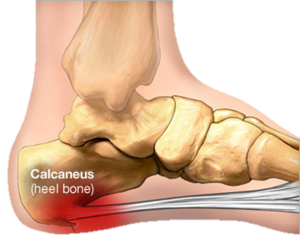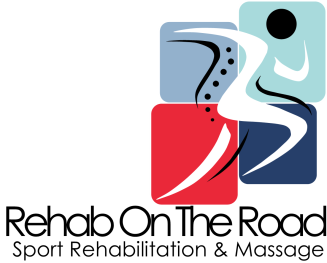A heel spur is a hooked bony growth protruding from under the heel bone (calcaneus). It has identical symptoms to and is often found to co-exist with plantar fasciitis.
Symptoms
Symptoms may be very similar to those of plantar fasciitis and include:
- Pain and tenderness under the heel, especially when weight-bearing.
- Pain may be worse on standing first thing in the morning and ease off later as the foot warms up, only to return later.
- Symptoms are usually worse with running or walking and improve with rest.
The main diagnosis of a heel spur is made by X-ray where a bony growth on the heel can be seen.
Pain from heel spurs can be due to decreased elasticity of the heel fat pad and sometimes it can also be due to compression of a small nerve in the foot which can lead to muscle atrophy.

Causes
Formation of a heel spur is thought to be due to repetitive trauma. This could be due to repetitive traction on the plantar fascia insertion on the calcaneus.Or repetitive trauma to the plantar fascia, or the small muscles of the foot which insert into the calcaneus.
In some people, this could be due to a genetic predisposition to develop new bone growth in response to repetitive trauma. Running, jumping and ballet have been found to be risk factors causing repetitive trauma leading to the heel spur formation.
A heel spur can also occur as a normal anatomical variation of the calcaneus bone in some cases. It can also occur as a normal process of ageing with calcification of ligaments.Heel spur formation has also been found to be associated with:
- A change in the gait pattern (how you walk).
- Increasing weight.
- Overpronation and flat feet.
- Rheumatoid and osteoarthritis.
Treatment
Rest
The most important part of treatment is rest. Do not undertake activities which hurt your foot or aggravate symptoms as this will only cause painful symptoms to persist.
Ice/cold therapy
Apply a cold therapy wrap regularly for 10 minutes at a time every hour initially to reduce pain and inflammation of the surrounding tissues.
Taping
Arch support taping is an excellent way of providing support and protection to the heel. A simple taping technique can often relieve symptoms instantly.
Medication
Anti-Inflammatory medicine (e.g. ibuprofen) may be prescribed by a doctor but always check with a medical professional first.
Orthotic insoles
Shoe inserts can help to take the pressure off the heel spur and reduce pain.
Exercises
Stretching exercises for the plantar fascia and calf muscles is particularly important, especially if symptoms are worse in the morning.
Contact Me
Let's chat!
Need more information? Send me an email or drop me a line. I don’t bite!
- Charlotte@rehabontheroad.co.uk
- 07971448719

